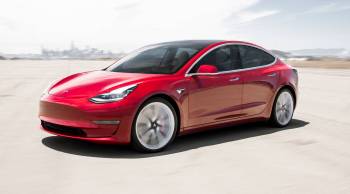3 lessons Fisker can learn from Tesla
Share Now on:
3 lessons Fisker can learn from Tesla
When environmentally-friendly car company Fisker debuted, it looked destined to flourish.
The Fisker Karma, the company’s first car model, accelerated from 0 to 60 miles-per-hour in under six seconds, provided the electric equivalent of around 90 miles per gallon, and — unlike other electric-powered cars at the time — the Karma didn’t need to be constantly recharged.
But the Karma flopped. Automotive review company Consumer Reports couldn’t provide a proper review of the car, since its Karma broke down before completing the reviewer’s check-in process. Customers even sued Fisker because of low-production quality.
Fisker, which hasn’t built a car in more than a year, doesn’t have enough money to pay back their loans to its investors and the U.S. Department of Energy. The company was often used as a poster child for poor government investment, due to its reliance on government stimulus funding, and is now on the auction block for its remaining assets. Valued at $2.2 billion in 2008, Fisker is accepting minimum bids for a paltry $30 million.
But, investors have already stated interest in the company. What should Fisker do differently this time around? Perhaps it can take a lesson from fellow electric-car company Tesla, which announced its first quarterly profit last May.
1. Start small
Whether it was due to increased government funding, or too-high expectations, Fisker’s first car was plauged with problems and wasn’t ready for mass-manufacturing.
Neither was Tesla’s first car, the Tesla Roadster.
But, Tesla had another avenue for revenue, its car battery technology. Tesla worked for years on perfecting electric battery technology before launching its own vehicle, and according to MIT Technology Review, that’s a big reason for Tesla’s current success: “Tesla’s lithium-ion battery pack technology is five to 10 years ahead of competitors when it comes to a passenger electric vehicle application, as measured by performance and cost to manufacture … Tesla’s battery lead allows it to produce a better vehicle at more affordable price.”
Even during its down years, Tesla is able to use profits off battery technology, according to GigaOm, licensing it to companies like Toyota and Daimler: “Tesla has made hundreds of millions of dollars off of its development deals and has used these funds to push forward production of its cars.”
2. Start slow
By the time Tesla launched the Tesla Roadster, Tesla had accumulated almost five years of experience, according to MotorTrend magazine. Compare that to the timeline of the Fisker Karma, which was announced by founder Henrik Fisker less than a year after the company’s inception, and before its battery technology was fully completed. Though Fisker announced its first car would be ready by Christmas 2009, setbacks plagued its debut until July 2011.
3. Have enough money
Not every car company can have Elon Musk at its helm to fund a start-up through its initial down years. But, once the U.S Government froze its line of loans to Fisker, there was little else the company could do to bounce back. Tesla posted quarterly losses for ten years before posting its first profit. Will Fisker’s next owner be able to do the same?
There’s a lot happening in the world. Through it all, Marketplace is here for you.
You rely on Marketplace to break down the world’s events and tell you how it affects you in a fact-based, approachable way. We rely on your financial support to keep making that possible.
Your donation today powers the independent journalism that you rely on. For just $5/month, you can help sustain Marketplace so we can keep reporting on the things that matter to you.


















